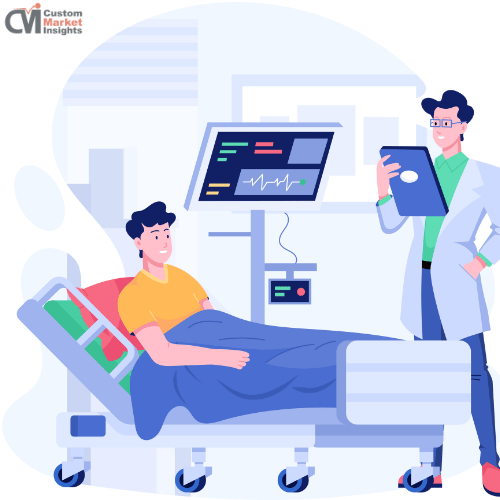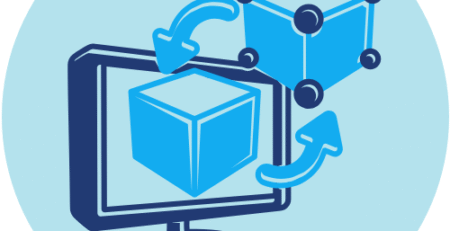Remote Patient Monitoring (RPM) has become a game-changing technology at a time when healthcare is quickly moving away from reactive, hospital-based treatment and toward proactive, home-based wellness. As more people have chronic diseases, the population becomes older, and the demand for affordable care grows, RPM technologies provide individuals the power to take care of their health at home and let clinicians keep an eye on their patients’ health in real time.
Remote Patient Monitoring uses digital tools, including connected devices, mobile health apps, and wearables, to keep an eye on patients outside of the doctor’s office and provide data to healthcare professionals for ongoing examination. This change leads to better results, fewer hospital readmissions, better use of resources, and happier patients.
The Rise of Remote Patient Monitoring in Modern Medicine:
The COVID-19 pandemic sped up the use of digital health tools by a lot, and remote patient monitoring became an important part of virtual care systems. Even if the epidemic is getting better, RPM is still growing because of new technologies, more regulatory support, and more people realizing how important it is for managing chronic conditions and preventing diseases.
Right now, RPM is typically used to keep an eye on things like blood pressure, glucose levels, weight, oxygen saturation, electrocardiograms, respiratory health, and taking medications as prescribed. It is important for the treatment of long-term conditions such as diabetes, high blood pressure, congestive heart failure, COPD, and rehabilitation after surgery.
How RPM Works: A Never-Ending Flow of Information and Care:
RPM is basically a closed-loop system in which people use connected medical devices to gather health information, which is subsequently sent to doctors for review via mobile or cloud platforms. Advanced RPM systems are linked to Electronic Health Records (EHRs) and use AI algorithms to find problems, which makes it easier to take quick action.
A person with heart failure could have a connected weight scale and pulse oximeter at home. If the device sees a sudden weight gain, which might mean that the person is holding onto fluid, it can automatically tell the care team. This early warning system makes it easier to change medications without having to go to the hospital.
RPM systems are now increasingly permitting two-way communication, which makes video consultations, personalized health coaching, and behavioral interventions to encourage compliance possible.
Benefits of Monitoring Patients Remotely:
- Better results and fewer readmissions: Studies show that RPM can greatly lower the number of people who have to go back to the hospital within 30 days for chronic diseases. Real-time monitoring makes it easier to find problems quickly and improves the accuracy of care management.
2. More Involvement of Patients: RPM puts patients first in their healthcare management. People feel more in control and are more likely to follow treatment plans when they keep an eye on their vital signs and understand how they change over time.
3. Making healthcare systems more cost-effective: RPM lowers total healthcare expenditures by cutting down on unnecessary emergency visits and hospital stays. Payers and providers are starting to see how it might make money.
4. Fixing differences in access to healthcare: RPM makes it easier for people in rural or impoverished areas to get treatment without having to travel, which solves problems with geography and logistics.
5. Data-Driven Decision Making: Ongoing data streams give us deeper insights than one-time assessments in the clinic, which helps us make more accurate diagnoses and create treatment plans that are specific to each patient.
Even though it has a lot of promise, there are a number of problems with using RPM:
• Data Privacy and Security: For any digital health system, it is very important to protect patient data from breaches and follow HIPAA and GDPR rules.
• Reimbursement and Regulation: Some governments and insurers currently pay for RPM services, but problems with policy coverage, coding, and paperwork still exist.
• Usability of Technology: Patients, especially older ones, may have trouble using RPM gadgets or apps. It’s really important to make user interfaces that are easy to understand and to help new users get started.
• Interoperability: If digital ecosystems aren’t connected, it could be harder to share data between RPM platforms and EHRs, which would make it harder to coordinate treatment and get insights.
To get beyond these problems, gadget makers, software developers, healthcare organizations, and lawmakers need to work together.
CMI Analysis: According to CMI, the global Remote Patient Monitoring market would be worth more than $45 billion by 2030, with an annual growth rate (CAGR) of 18%. New sensor technologies, more people getting chronic conditions, and the fact that virtual care is becoming more common after the pandemic are all driving the industry.
CMI lists a number of trends that are having an effect on the RPM landscape:
1. Combining AI and Predictive Analytics: Vendors are adding AI to RPM platforms to find problems, analyze risks, and automate care paths. This makes it easier for providers to make clinical decisions and reduces their fatigue.
2. Move to Preventive Care Models: CMI sees that RPM is being used more and more in health efforts that focus on preventing problems, such as measuring wellbeing, controlling weight, keeping an eye on mental health, and caring for pregnant women.
3. Focus on interoperability and platform consolidation: The market is moving away from separate solutions and toward integrated RPM platforms that can handle many ailments and work with EHRs, telemedicine systems, and third-party apps.
4. Security at the Enterprise Level: Major providers and payers are increasingly choosing suppliers that offer a wide range of security capabilities, including end-to-end encryption, role-based access control, and blockchain integration.
Philips Healthcare, Medtronic, Dexcom, BioTelemetry (a subsidiary of Philips), iRhythm Technologies, Omron Healthcare, and newer firms like Current Health, Withings, and Validic are also important players in the RPM market. These companies stand out because of how accurate their devices are, how scalable their platforms are, how good their user experience is, and how well they can integrate with other systems.
CMI says that there are more and more RPM-as-a-Service models, which let providers quickly set up RPM solutions without having to spend a lot of money on infrastructure. This makes them easier for mid-sized practices to use.
The Future of RPM: Toward a Connected Health Ecosystem
The evolution of RPM is enabling continual, holistic intervention that goes beyond acute medical intervention. next generation RPM systems will be part of smart homes, wearables, and AI-based care pathways with real-time proactive alerts, lifestyle counseling, and automated triage.
CMI predicts that there will be a rising number of multi-modal RPM solutions that combine data from wearable biosensors, smart pills, speech recognition applications, and mobile health journals to provide a comprehensive look at a patient’s health progression.
Additionally, RPM will be essential in value-based care and risk-sharing models, where providers are paid for results instead of volume of care. The capability for remote health surveillance and preemptive treatment is entirely consistent with these models.
There is increasing government support for RPM, notably in the U.S., Europe, and Asia-Pacific, as funding, reimbursement, and digital health strategies drive expansion.
Final Thoughts:
Remote Patient Monitoring is changing the game for healthcare. RPM moves beyond the scope of conventional healthcare delivery to offer a model of care that is continuous, data-rich, and patient- demand based. It’s good for people, takes the strain off our strained hospitals, and produces better results at a lower cost.
“Anyone who’s investing in scalable, secure, and interoperable monitoring of health care providers or even internet entrepreneurs is going to own the future,” according to a CMI analysis. RPM ensures that healthcare is not just more accessible but also proactive, personalized, and always there by turning homes into an extension of care.
Connect with our Experts


